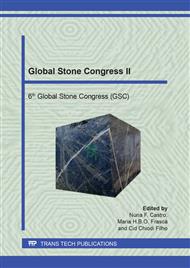p.77
p.87
p.101
p.109
p.119
p.127
p.137
p.145
p.157
The Padua Natural Stone Cluster: From the Corrals to the Olympic Boulevard
Abstract:
The Santo Antonio de Padua natural stone cluster in the state of Rio de Janeiro is considered one of the most successful small mining initiatives in Brazil, having seen the creation of around 150 small- and medium-sized companies operating quarries and stone saw mills. Initially used as corral flooring material, the natural stone was later used in large urban projects such as the Porto Maravilha, a project supported by the city of Rio de Janeiro to modernize the city port before the 2016 Olympic Games. Such a step forward was made possible by a multistakeholder approach that brought together local stone business representatives, government agencies, non-governmental institutions, and other authorities that supported a regional development plan stablishing natural stone production as a priority. This paper describes historical events associated with the development of the Padua stone cluster that may offer practical examples for similar initiatives worldwide.
Info:
Periodical:
Pages:
119-126
Citation:
Online since:
June 2020
Authors:
Price:
Сopyright:
© 2020 Trans Tech Publications Ltd. All Rights Reserved
Share:
Citation:


